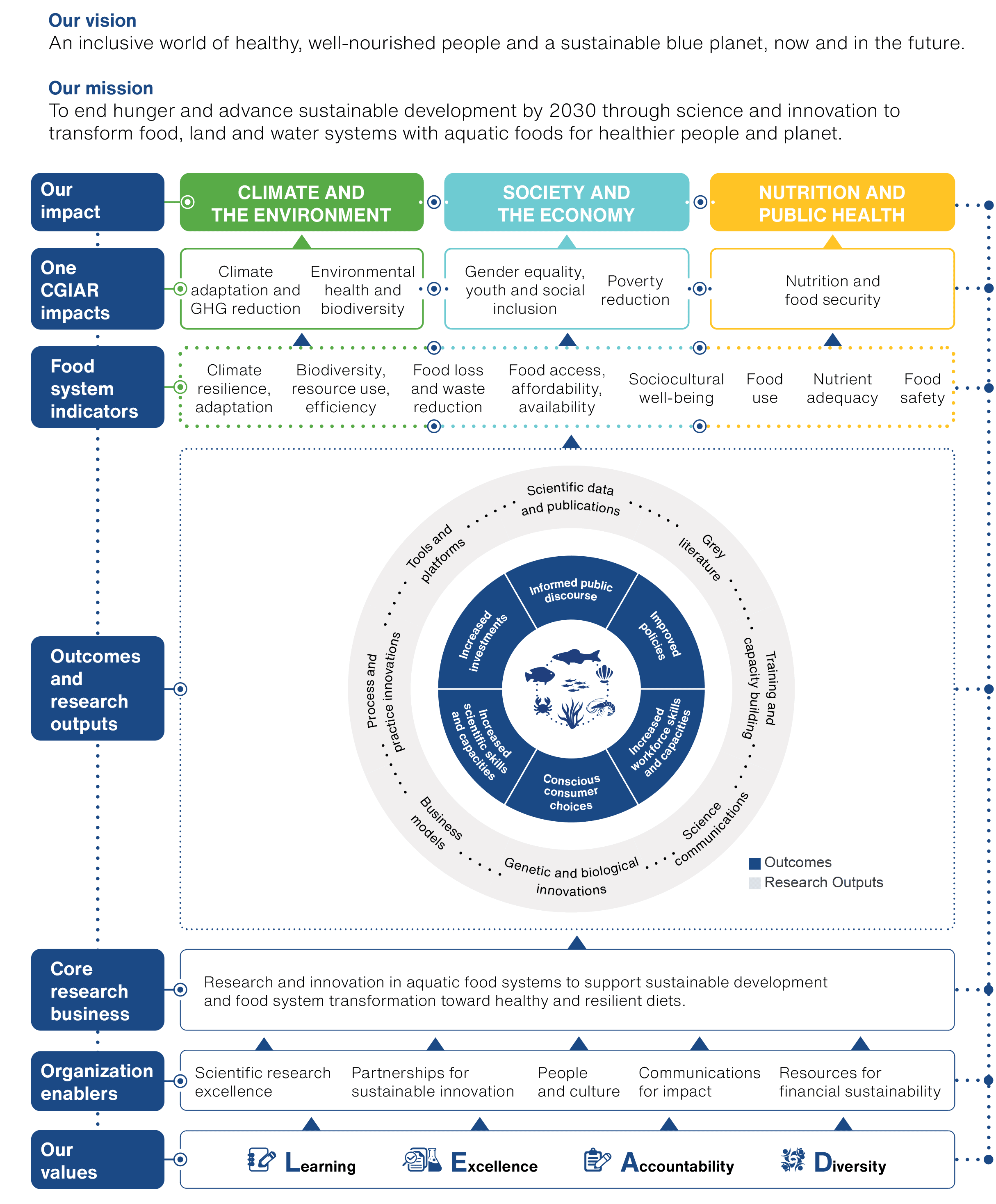AQUATIC FOODS FOR HEALTHY PEOPLE AND PLANET
2030 Research and Innovation Strategy
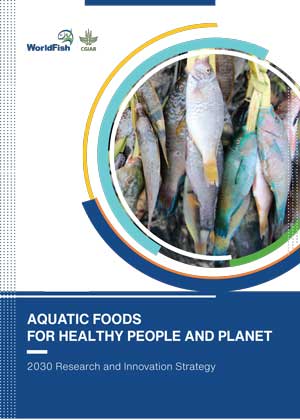
WorldFish 2030 Research And Innovation Strategy
DownloadFOREWORD
Since its establishment in 1975, WorldFish has come a long way from being a fisheries research center within the University of Hawaii. We have become a global research and innovation institution whose contributions to the sustainable development of fisheries and aquaculture in low- and middle-income countries are internationally recognized. Over that time, we have seen immeasurable growth in our knowledge of how sustainable fisheries and aquaculture contribute to climate mitigation and adaptation, biodiversity, nutrition and public health, and improved livelihoods of women, men and young people. Our work has enhanced the lives of millions, providing evidence-based solutions to real-world problems through a vast network of national and international partners across research, policy, business, civil society and local communities in Africa, Asia and the Pacific.
In 2020, our 45th anniversary provided the opportunity to take stock of our impact and also reflect on our achievements and the lessons we have learned along the way. In a world that keeps changing, it is clear to us that the best way to keep thriving is to embrace change. For only through continuous adaptation and reinvention can we stay relevant and ahead of the curve. For this reason, our original mandate has broadened to include larger aspects of aquatic food systems and their essential role in sustaining human well-being and the health of our planet. We recognize that to address complex 21st century challenges we must embrace a transformation approach for food, land and water systems to deliver broad access to affordable, sufficient, healthy diets and decent employment within environmental limits.
As we take our longstanding tradition of scientific excellence and partnerships for sustained innovation forward into the next decade, this strategy charts a new course for future research on aquatic food systems in response to the global call to action for transformational change of our food systems. More than ever, we believe robust and applicable scientific knowledge is required to overcome the incumbent institutional, social, cultural, economic and political barriers that keep us from radically realigning efforts to end hunger and malnutrition and meeting the other targets of the 2030 Sustainable Development Goals (SDGs).
We believe fish and other aquatic foods must occupy a central place in the global agricultural research agenda, which has traditionally focused on land-based crops and livestock. With this strategy, we are poised to expand thinking, multidisciplinary research and cross-sector partnerships with fellow One CGIAR centers and with other national and international partners in favor of a more ambitious, game-changing agenda for agricultural research and innovation that supports implementation of SDGs at both country and global levels.
Going forward, our work will be guided by our new mission: “to end hunger and advance the Sustainable Development Goals by 2030 through science and innovation to transform food, land and water systems with aquatic foods for healthier people and planet.” Our strategy to 2030 provides a guiding framework for our work on transforming sustainable food systems in collaboration with an innovation ecosystem of partners. Using this framework, we will explore, identify and articulate sustainable food system transformation approaches, scenarios and game-changing innovations at the intersection of research, technology, markets, policies and social mobilization across disciplines and sectors. Our research on aquatic food systems, and on the forces that help or hinder transformational change, will guide and support national and global efforts to tackle climate change, protect nature and biodiversity, sustain livelihoods and boost human nutrition and well-being.
Aquatic foods must occupy a central place in the global agricultural research agenda, which has traditionally focused on land-based crops and livestock.
In Part I, our strategy measures the pulse of the fast-changing world around us. It offers “our vision for an inclusive world of healthy, well-nourished people and a sustainable blue planet, now and in the future.” We believe this vision can be realized through our unique proposition on the important but largely overlooked role of aquatic foods in meeting the critical challenges associated with the SDGs, as well as those outlined in the 2030 Research and Innovation Strategy of One CGIAR, the world’s largest agricultural innovation network, to which we belong.
In Part II, the strategy articulates our transformative agenda for research on aquatic food systems and its focus on three crucially important areas: (1) climate resilience and environmental sustainability, (2) social and economic inclusion, and (3) nutrition and public health. Our shift towards food systems research takes into account all four dimensions of capital (natural, produced, human and social) in food systems, from production through to consumption. Through extensive consultation and assessment of challenges in target geographies and communities, we have built on the areas of work where WorldFish has a strong legacy of impact. We have also canvassed new opportunities based on emerging food system trends.
In Part III, the strategy lays out the path for our own organizational transformation. We recognize that to respond effectively to change and deliver relevant research solutions at scale for sustainable system transformation at all levels, we must be prepared to reinvent ourselves. Additionally, our response to the COVID-19 pandemic had led us to devise a new organizational strategy and business model that reimagines the ways in which we must operate to successfully weather shocks and uncertainties, and thrive in the future. Our focus will be on mobilizing world-class capabilities and resources. This will sharpen the agility and responsiveness of our operations, help us adapt to new ways of working and collaboration, and secure more funding for scientific research on aquatic food systems as well as strengthen our long-term financial sustainability.
WorldFish is the only center in One CGIAR with 45 years of experience in fisheries and aquaculture research in low-and middle-income countries. Through our position within One CGIAR, alongside our noteworthy contribution to SDG 14: Life Below Water, we add particular value to the quest of transforming global food systems toward healthy and sustainable diets that work for people and the planet. We believe that this quest is simply not possible to achieve without the opportunity to examine, quantify and include the contributions of aquatic food systems. Our priority is to better integrate fish and aquatic foods into the global agricultural research agenda and link the latter to the blue economy and ocean space, whose assets such as fisheries, shipping lanes and tourism are worth USD 24 trillion. This task is critical to ensure a full representation of the food system, address the complex links among food, land and water systems, and unlock an ocean of opportunities in an emerging blue economy that must prioritize social inclusion and equity.
As a globally networked organization, are operations are embedded into a larger innovation ecosystem of partners, both within One CGIAR and beyond. We are guided by our values of “Learning, Excellence, Accountability and Diversity.” We remain committed to delivering research of the highest quality, integrity and impact, and to nurturing a diverse constellation of partners for sustained innovation. And we carry this commitment across various disciplines and sectors at both national and international levels.
Our commitments to people and to building a high-performing organizational culture put a premium on the diversity of talents, skills and backgrounds required to deliver our best work. Digital transformation will power new ways of working and collaborating with each other and with partners, as well as our learning, growth and innovation. We have set the bar high for ourselves through our commitment to significantly reduce the carbon footprint and environmental impact of our operations. In addition, we recognize the crucial importance of communicating the results of our scientific discoveries widely and effectively. This guides and supports important decisions—from household to global levels—that affect people’s quality of life and the future of our planet.
The ideas we have set forth here are bold and ambitious. We invite all our research and funding partners, staff and stakeholders within One CGIAR and beyond to embark with us on this exciting new journey of aquatic foods for heathy people and planet. On behalf of the Board of Trustees, we are proud to present this strategy to the global community.

Yusuf Abubakar
Board Chair

Gareth Johnstone
Director General

Yusuf Abubakar
Board Chair

Gareth Johnstone
Director General
THE BIG FACTS ON
AQUATIC FOODS
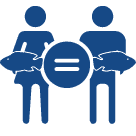
600 million
Number of people around the world who depend on small-scale fisheries and aquaculture for their livelihoods.

60 million
Number of people engaged in the primary sector of fisheries and aquaculture in 2018.

90%
Percentage of all small-scale fishers live in low- and middle income countries in the Global South.
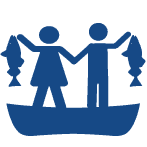
50%
Percentage of the total global catch comes from small-scale fisheries.

1 in every 2
Workers in the primary and secondary sector of fisheries and aquaculture are women.
They are crucial to aquatic food systems, providing labour, innovative ideas and entrepreneurship.

$ 70 million
The estimated market size of the plant- and cell-based aquatic foods by 2030.

40%
The estimated decline in tropical fish catch globally by 2050, unless actions to curb C02 emissions are taken.
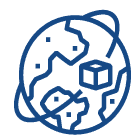
Production of aquatic foods has a much lower carbon footprint and far fewer biodiversity impacts compared to production of crops and livestock.
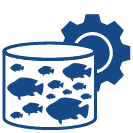
204 million tons
The volume of aquatic food production by 2030.

$ 24 trillion
The value of the ocean economy, including fisheries, shipping lanes and tourism.
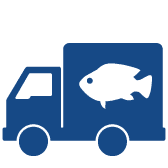
$ 164 billion
The global export value of fish alone in 2018, making aquatic foods among the world’s top traded commodities.
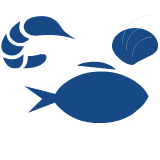
$ 264 billion
The value of aquatic food production through aquaculture in 2018.

$ 22.5 billion
The annual loss of discarded fish alone.
35% of the global harvest from fisheries and aquaculture is lost or wasted.
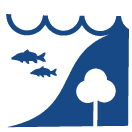
60%
Percentage of the world's farmed fish in 2018 produced through inland aquaculture.
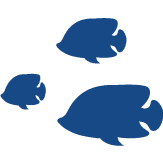
66%
Percentage of fishstocks currently within biologically sustainable levels, compared to 90% in 1990.

3.3 billion
Number of people getting 20% of their animal protein from eating aquatic foods.
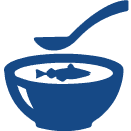
2 billion
Number of people suffering the triple burden of malnutrition who can benefit from the life-changing option of consuming nutrient-rich aquatic foods.

17%
Percentage of all animal protein consumed globally comes from aquatic foods.

Aquatic foods naturally contain healthy omega fats that are difficult to obtain from land-based food sources, such as crops and livestock.
The intake of omega-3 fatty acids from fish and aquatic foods is associated with lower risk of cardiovascular disease and obesity.
When consumed as part of a balanced diet, fish can increase the absorption of essential minerals, such as iron and zinc from other foods.

1000 days
Aquatic foods are dense in vitamins and micronutrients, which are essential to cognitive development in the first 1000 days of a child’s life.
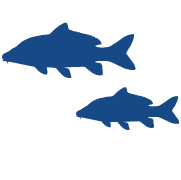
84%
Percentage of global protein sourced from the sea that comes from wild fisheries.

The weight of ocean plastics will exceed the weight of all fish by 2050, unless coordinated multi-stakeholder actions to curb plastic pollution are taken.
